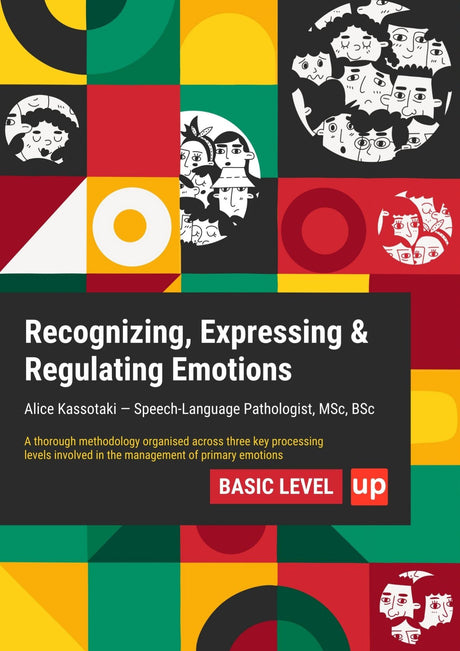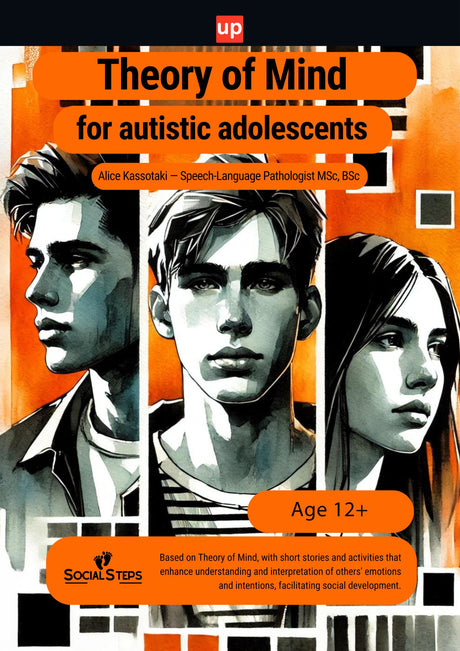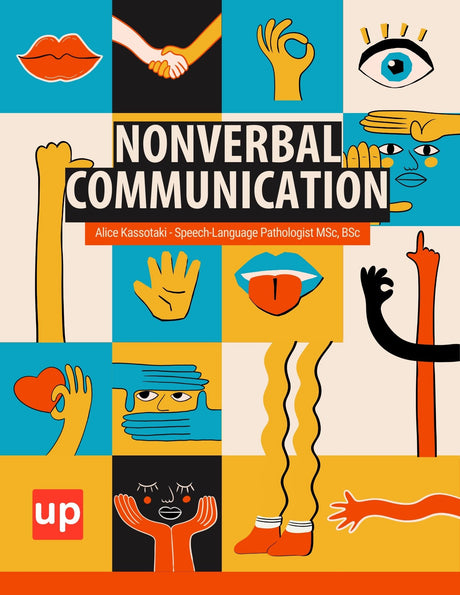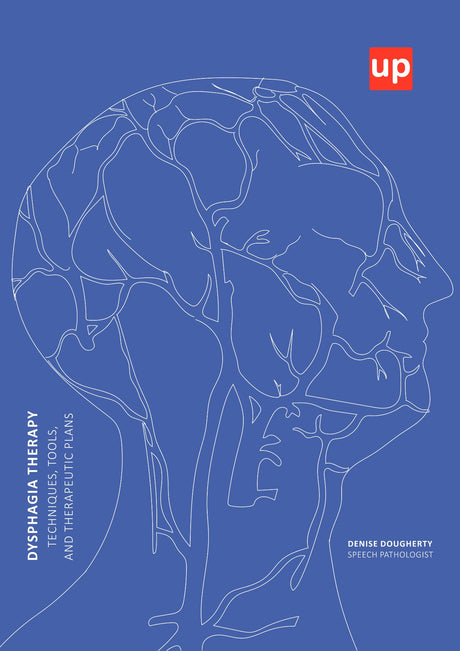Montessori schooling emphasizes child-led learning and independence. It nurtures a child’s natural curiosity and love for knowledge, supporting each child's development through individualized learning. How does it differ from traditional education? Read on to learn about its unique principles and lasting benefits.
Key Takeaways
- The Montessori method emphasizes child-led, self-directed learning, allowing children to explore their interests at their own pace while fostering independence and critical thinking skills.
- Montessori education extends from infancy to young adulthood, with tailored programs for each developmental stage that promote social, emotional, and practical life skills in a supportive environment.
- Authentic Montessori education is characterized by well-trained teachers, mixed-age classrooms, and hands-on learning experiences, resulting in enhanced academic performance and intrinsic motivation among students.
The Montessori Method: An Overview

The Montessori method is a child-led, self-directed educational approach that emphasizes respect for the child and independent learning. At its core, Montessori education views children as naturally eager for knowledge, who thrive through self-directed exploration and active engagement in discovering information. This method contrasts sharply with traditional education models, where teachers often direct and control the learning process.
In a Montessori classroom, teachers play a unique role as facilitators rather than traditional instructors. Montessori teachers observe students and step back to allow children to take charge of their own educational experiences. This approach empowers children to follow their interests, work at their own pace, and develop a deep understanding of the subjects they explore, staying true to Maria Montessori's original principles.
The Montessori method’s philosophy is grounded in the belief that education should foster a child’s natural curiosity and desire to learn. Maria Montessori principles emphasize the importance of creating an environment where children feel respected, valued, and capable. This educational philosophy aims to develop not only academic skills but also social, emotional, and practical life skills, preparing children for all aspects of life.
Educators and parents who embrace the Montessori method can foster a learning environment that supports and nurtures each child’s unique potential.
Definition and History of Montessori Education
Montessori education is a child-centered approach to learning that emphasizes self-directed activity, hands-on learning, and collaborative play. Developed by Italian physician and educator Maria Montessori, the method is based on the idea that children learn best through exploration and discovery. The first Montessori school was established in Rome in 1907, and the method has since been adopted by schools around the world. Today, there are over 22,000 Montessori schools in more than 110 countries, making it one of the most popular alternative education methods globally.
Maria Montessori’s innovative approach revolutionized early childhood education by focusing on the natural development of children. Her observations and research led to the creation of a learning environment that respects and nurtures each child’s individual growth. Montessori education continues to inspire educators and parents, providing a proven framework for fostering independent, confident, and lifelong learners.
Age-Specific Montessori Programs
Montessori education spans from birth to age 18, with programs tailored to each developmental stage from infancy to young adulthood. This comprehensive approach ensures that the unique needs and abilities of children at different ages are met, fostering continuous growth and development. Many Montessori schools have adapted their programs to include middle and high school levels, ensuring a continuous and comprehensive educational experience.
The Montessori approach effectively caters to children’s developmental needs across all age groups, from birth to 18 years. Acknowledging and responding to the unique characteristics of each developmental stage, Montessori programs create a supportive and enriching learning environment for all children.
We will now delve into the specific Montessori programs for different age groups, including infants and toddlers, early childhood education, and elementary school programs.
Infant and Toddler Programs
The primary focus of Montessori programs for infants and toddlers is fostering independence and exploration. These programs emphasize the use of scaled materials, movement development, and activities that promote self-sufficiency and autonomy from a very young age. A safe and stimulating Montessori environment helps infants and toddlers build a solid foundation for future learning experiences.
A foundational aspect of infant and toddler Montessori programs is the development of the sense of self in a child’s development. During this first plane of development, characterized by concrete, sensorial exploration, psychological self-construction, and the building of functional independence, children engage in activities that strengthen their sense of self and their understanding of the world around them.
Early Childhood Education Programs
Early Childhood Montessori programs cater to children aged 2.5 to 6 years. These programs are characterized by multi-age classrooms, which allow gifted students to progress at their own pace while remaining with their peers. This structure creates a dynamic learning environment where younger children benefit from observing and interacting with older peers, and older children reinforce their knowledge by mentoring and assisting the younger ones.
Younger children in multi-age classrooms benefit significantly by learning from older peers and facing new challenges through observation. This collaborative and inclusive environment fosters social development and a sense of community, helping children develop essential social and emotional skills.
Elementary School Programs
Montessori elementary education incorporates interdisciplinary lessons that encourage student-led inquiry and exploration. This approach allows children to delve deeply into subjects of interest, fostering a love for learning and critical thinking skills. The curriculum is designed to be flexible and responsive to the needs and interests of each child, promoting a personalized learning experience.
Elementary Montessori classrooms typically serve mixed-age groups of 6-9 years and 9-12 years. This structure promotes collaboration, peer learning, and mentorship, creating a supportive and enriching educational environment where children can thrive.
Middle School Programs (12-15 years)
Montessori middle school programs are designed to support the unique needs of early adolescents. During this stage, students are transitioning from childhood to adolescence and require a learning environment that fosters independence, self-motivation, and social responsibility. Montessori middle school programs typically include a range of subjects, such as mathematics, language, science, and social studies, as well as practical life skills and community service. The program is designed to help students develop critical thinking, problem-solving, and communication skills, as well as a sense of purpose and direction.
In a Montessori middle school, students engage in project-based learning and real-world applications of their studies. This approach not only enhances academic understanding but also prepares students for the complexities of adult life. By encouraging self-directed learning and community involvement, Montessori middle schools help students build a strong foundation for future academic and personal success.
Unique Features of Montessori Classrooms

Montessori classrooms are designed to be calming and intuitive, which contrasts with the cluttered, bright environments typical of traditional classrooms. Most Montessori schools are characterized by their calm and intuitive design, which contrasts with the cluttered environments of traditional classrooms. The layout is intentionally organized to promote exploration and facilitate learning, with each area carefully curated to support different aspects of child development. This structured yet flexible environment allows children to move freely and engage with materials that interest them.
Before:
The Montessori classroom is not unstructured; it is meticulously designed to facilitate learning while maintaining certain guidelines. The five core components of Montessori education include trained Montessori teachers, multi-age classrooms, specialized materials, child-directed work, and uninterrupted work periods. Together, these elements create a harmonious environment that nurtures independent and collaborative learning.
After:
The five core components of Montessori education include:
- Trained Montessori teachers
- Multi-age classrooms
- Specialized materials
- Child-directed work
- Uninterrupted work periods
Together, these elements create a harmonious environment that nurtures independent and collaborative learning.
Teachers in a Montessori setting guide children without direct instruction, allowing them to explore and learn autonomously. Montessori classrooms are typically organized in multi-age groupings that span three years, encouraging peer learning and mentorship.
Montessori Materials
Montessori materials are specifically designed to support the development of individual skills. These materials are essential for hands-on learning, helping children to develop specific skills through tactile experiences. Programs for infants and toddlers, for example, are designed to support sensory exploration and promote independence through age-appropriate activities.
In Early Childhood Montessori programs, children engage with materials that are scaled to their size, facilitating hands-on learning. The use of child-sized materials helps to foster engagement and develop practical life skills, making learning both enjoyable and meaningful.
The carefully crafted Montessori materials teach a single skill or concept, following a logical and developmentally appropriate progression. This approach ensures that children can build upon their knowledge and skills in a structured manner.
Multi-Age Classrooms
Elementary classrooms in Montessori education often include mixed-age groups to foster collaboration and peer learning. This multi-age setting allows children to learn from one another, develop social skills, and build a sense of community. Younger children benefit from observing and interacting with older peers, while older children reinforce their knowledge by mentoring and assisting the younger ones.
The multi-age classroom structure of Montessori promotes social inclusion and helps children with disabilities build self-esteem. By engaging in collaborative learning experiences, children develop essential social and emotional skills that prepare them for future interactions.
Montessori schools encourage social and emotional development by fostering an inclusive environment where children of varying ages work together. This structure promotes empathy, cooperation, and mutual respect among students.
Montessori Teachers and Their Role
The primary role of a Montessori teacher is to observe and guide each child's development through individualized learning. In a Montessori classroom, teachers guide and consult students individually, adapting to their learning needs and interests. This personalized approach ensures that each child’s unique potential is nurtured and developed.
Effective Montessori teachers must exhibit patience and empathy to support children’s individual learning journeys. They create learning environments that nurture independence and critical thinking, allowing children to explore and discover at their own pace. Montessori educators are trained to adapt educational materials and activities to fit the diverse learning styles of their students.
Individualized lesson plans are created by Montessori teachers through careful observation to meet the unique needs of each student. Teachers customize lessons by adapting them based on each child’s needs and interests, creating opportunities for self-direction and exploration.
The Montessori framework nurtures resilience by encouraging children to view challenges as opportunities for growth and learning. This approach helps children develop a positive attitude towards learning and problem-solving, preparing them for future success.
Montessori Curriculum and Learning Areas
The curriculum of Montessori education is tailored to facilitate learning across cognitive, emotional, social, and physical domains. Hands-on learning with specially crafted materials is a hallmark of Montessori education, allowing children to engage deeply with the subjects they explore. This approach fosters a love for learning and helps children develop critical thinking and problem-solving skills.
In a Montessori curriculum, there are five key areas of learning:
- Practical life
- Sensorial
- Mathematics
- Language
- Cultural studies
Each area is designed to develop specific skills and knowledge, providing a well-rounded educational experience. The curriculum is presented through an integrated approach that connects different subjects, encouraging children to see the relationships between various areas of knowledge.
Montessori classrooms commonly include child-sized furniture, practical skills materials, and various educational resources. This flexibility allows children to choose their work location and access all necessary materials for their activities, promoting independence and self-directed learning.
Practical Life Activities
Practical life activities aim to enhance children’s independence through tasks they can observe in everyday life. These activities help children develop practical life skills, contributing to their ability to care for themselves and their environment. Engaging in these tasks teaches children responsibility and fosters a sense of accomplishment.
The Montessori approach helps children learn practical life skills, such as dressing themselves, preparing food, and cleaning up after activities. These skills are essential for their overall development and independence. Hands-on materials in Montessori education help children with disabilities gain concrete experiences, aiding their learning process.
Through practical life activities, children develop fine motor skills, coordination, and concentration. These foundational skills are crucial for their academic success and lifelong learning.
Sensorial Learning
The purpose of the sensorial area in a Montessori curriculum is to develop and refine children’s senses to understand and adapt to their environment. Sensorial education focuses on refining sensory perceptions, helping children to classify and organize their sensory experiences. This process enhances their cognitive development and understanding of the world around them.
Working with sensorial materials enables children to develop skills such as sorting, classifying, and organizing. These skills are essential for their academic success and overall development. Sensorial learning also helps children to develop attention to detail and critical thinking skills.
The Montessori method emphasizes the importance of sensory exploration in early childhood education. Sensorial materials are designed to isolate specific sensory experiences, allowing children to focus on and refine their perceptions.
Mathematics and Language
The Montessori math curriculum focuses on mathematical concepts through hands-on experiences, integrating language learning with these activities. Materials commonly used in Montessori education for language include sandpaper letters, while math education utilizes spindle boxes, number rods, and number tiles. These materials provide tactile learning experiences that help reinforce fundamental math and language concepts.
Hands-on materials, such as bead chains, enhance tactile learning experiences and help children grasp abstract mathematical concepts. The Montessori approach allows exercises and learning activities to build on each other, enabling children to progress at their own pace in both math and language.
Integrating mathematics and language, Montessori education fosters a comprehensive understanding of these subjects. This approach helps children develop strong foundational skills that support their academic success and lifelong learning.
Transitioning from Montessori to Traditional Schools
Montessori students are accustomed to taking responsibility for their learning, making them more adaptable to structured environments. Research indicates that Montessori-educated students frequently excel academically after moving to traditional settings. This success can be attributed to their strong foundation in critical thinking, problem-solving, and self-direction.
The transition to traditional schooling can initially be challenging for Montessori students due to the shift in learning pace. However, their advanced social skills and ability to collaborate with peers often help them integrate into new environments more easily. Montessori children often thrive in traditional schools due to their independence and collaborative skills.
Parents often worry that Montessori students may struggle with the competitive nature of traditional schools. However, the adaptability and resilience cultivated through Montessori education generally prepare children well for these challenges.
Overall, the transition from Montessori to traditional schools highlights the strengths of Montessori education in fostering well-rounded, capable, and confident learners.
Strategies for a Successful Transition
Transitioning to a Montessori school can be a significant change for children and families. To ensure a successful transition, it’s essential to prepare children in advance, communicate with teachers and staff, and establish a consistent routine. Here are some strategies for a successful transition:
- Prepare children in advance: Explain the Montessori method and what to expect in the classroom. Familiarize them with the concept of self-directed learning and the importance of independence.
- Communicate with teachers and staff: Understand the school’s policies and procedures. Regular communication with teachers can help address any concerns and provide insights into your child’s progress.
- Establish a consistent routine: Regular drop-off and pick-up times help children feel secure and develop a sense of independence. Consistency at home and school reinforces stability.
- Encourage open communication: Allow children to ask questions and express their feelings about the transition. Listening to their concerns can help them feel more comfortable and supported.
- Be patient and flexible: Transitions can take time. Provide reassurance and support as your child adjusts to the new learning environment.
By following these strategies, families can help their children adapt to the Montessori method and thrive in their new educational setting.
Montessori Education for Children with Disabilities
Montessori education provides a supportive environment for children with various disabilities, including physical disabilities, learning differences, ADHD, and autism. The Montessori method’s emphasis on individualized learning allows children to progress through the curriculum at their own pace, catering to their unique needs and abilities. Public Montessori schools also play a crucial role in providing inclusive education for children with disabilities, ensuring accessibility and support for all students.
Children can spend up to three years with the same teacher in a Montessori classroom, which fosters a strong sense of stability and trust. This continuity helps children with disabilities to feel secure and supported in their learning environment.
The multi-age classroom structure also promotes social inclusion and helps children with disabilities build self-esteem. Montessori education’s focus on hands-on learning and practical life skills provides concrete experiences that support the learning process for all children.
Accommodations and Support in Montessori Classrooms
Montessori classrooms are designed to be inclusive and supportive of children with diverse needs. Accommodations and support may include:
- Individualized instruction and learning plans: Tailored to each child’s unique needs and abilities, ensuring they receive the appropriate level of challenge and support.
- Adaptive materials and equipment: Specialized tools and resources that cater to different learning styles and physical abilities.
- Assistive technology: Devices and software that aid in communication, learning, and accessibility.
- Behavioral support and counseling: Professional guidance to help children manage their emotions and behaviors effectively.
- Speech and language therapy: Targeted interventions to support communication skills.
- Occupational therapy: Activities and exercises designed to improve fine motor skills and daily living abilities.
Montessori teachers are trained to work with children with diverse needs and to provide accommodations and support as needed. The goal is to create a learning environment that is inclusive, supportive, and challenging for all children. By fostering a sense of belonging and providing the necessary resources, Montessori classrooms help every child reach their full potential.
Parental Involvement in Montessori Education
Parental involvement is a crucial aspect of Montessori education, with parents expected to engage in activities such as parent education, classroom observation, and enriching learning experiences. Collaboration with parents enhances children’s educational experiences and supports their development.
Maintaining communication with teachers and participating in school events further supports children’s Montessori education. Staying involved and informed allows parents to reinforce Montessori values and principles at home.
Facilitating social development in children’s development can be achieved through organized playdates and group activities, reinforcing positive interactions and helping children develop essential social skills.
Common Misconceptions About Montessori Education
Contradictory myths and misconceptions exist about the Montessori method, often leading to confusion and misunderstanding. One common misconception is that Montessori classrooms are unstructured and lack discipline. In reality, Montessori classrooms are meticulously designed to facilitate learning while maintaining certain guidelines.
Another misconception is that any school can claim to be Montessori-based due to the lack of trademark protection for the term “Montessori”. This has led to public misconceptions about the method, as schools may implement varying interpretations of Montessori principles.
The lack of trademark protection for the Montessori name has led to inconsistent implementation, further adding to the confusion. It is essential for parents to research and identify authentic Montessori programs to ensure their children receive the true benefits of this educational method.
Benefits of Montessori Schooling

Montessori education encourages children to take charge of their learning, fostering independence and confidence. The method features uninterrupted work periods, allowing children to focus on tasks at their own pace without distractions. This approach promotes a lifelong love of learning by making education engaging and relevant through hands-on experiences. Private Montessori schools often achieve better performance results, both academically and nonacademically, due to their flexibility in implementing the Montessori method.
Students in Montessori programs develop critical thinking and problem-solving skills through self-directed exploration of the curriculum. Motivation in Montessori education comes from within, fostering a natural desire to learn. Children are encouraged to choose their own work, promoting engagement and motivation through self-direction.
Through environmental education, Montessori students develop a respect for nature and sustainability practices. The holistic approach of Montessori education results in both academic and non-academic outcomes, contributing to overall child development.
Montessori education emphasizes self-discipline, allowing children to learn at their own pace while adhering to classroom rules. Parents can foster independence in their children by allowing them to complete tasks and solve problems without direct intervention.
Academic and Non-Academic Benefits
Montessori education has been shown to have a range of academic and non-academic benefits for children. Some of the benefits include:
- Improved academic performance: Particularly in reading and mathematics, as children engage deeply with the material through hands-on learning.
- Increased independence, self-motivation, and self-confidence: Children learn to take responsibility for their own learning, fostering a sense of autonomy and self-assurance.
- Enhanced social skills: Including communication, cooperation, and conflict resolution, as children work collaboratively in a supportive environment.
- Improved emotional intelligence and well-being: Through activities that promote self-awareness, empathy, and emotional regulation.
- Increased creativity, curiosity, and love of learning: Encouraged by the freedom to explore interests and engage in meaningful activities.
- Better preparation for future academic and professional success: As children develop critical thinking, problem-solving, and time management skills.
Overall, Montessori education is a unique and effective approach to learning that can have a lasting impact on children’s academic, social, and emotional development. By nurturing the whole child, Montessori programs prepare students for a lifetime of success and fulfillment.
Authentic Montessori Education

Authentic Montessori education is characterized by child-led learning and a focus on independence. The core components of authentic Montessori education include child-centered learning environments, hands-on learning experiences, and mixed-age classrooms. These elements create a supportive and enriching educational environment that nurtures each child’s unique potential.
Genuine Montessori schools have properly trained teachers who are skilled in implementing the Montessori method. Considering these components and the role of teachers enables parents to identify authentic Montessori programs that truly benefit children’s learning and development.
Choosing authentic Montessori education ensures children receive the full benefits of this innovative and effective approach.
Montessori Education and Scientific Validation

The Montessori Method is backed by scientific studies, affirming its effectiveness and educational principles. Montessori classrooms emphasize self-directed learning, which has been shown to enhance children’s executive function skills. In studies, high-fidelity Montessori classrooms led to significant gains in reading, math, and social problem-solving skills.
According to a 2017 longitudinal study, students performed better on academic tests. This was in comparison to their peers in traditional public schools. A study conducted in 2012 showed that children in traditional Montessori programs had better performance. This was in comparison to children in supplemented Montessori or conventional classrooms. According to a 1975 study, Montessori students scored higher on the Stanford–Binet Intelligence Scales than those in traditional programs.
Studies have shown that children in Montessori settings often achieve better performance in certain academic areas, like math and science, compared to peers in conventional settings. Research demonstrates that Montessori students often show greater creativity than their peers in traditional educational settings.
Research indicates that Montessori education may foster greater intrinsic motivation among adolescents compared to traditional schooling. The lack of randomized controlled trials in Montessori research makes it difficult to draw definitive conclusions about its effectiveness. The effectiveness of Montessori education might be influenced by various factors, including school fidelity and the demographic characteristics of students.
Summary
In summary, Montessori education offers a unique and effective approach to child development and learning. By fostering independence, curiosity, and a love for learning, Montessori education prepares children for lifelong success. The Montessori method’s emphasis on hands-on learning, individualized instruction, and a supportive environment nurtures the whole child, addressing cognitive, emotional, social, and physical development.
The benefits of Montessori education are well-documented, with scientific studies affirming its effectiveness in enhancing academic and social skills. Authentic Montessori programs, characterized by properly trained teachers, child-centered learning environments, and mixed-age classrooms, provide a truly enriching educational experience.
As we conclude this exploration of Montessori education, we hope you are inspired to consider this innovative approach for your child’s development and learning. The Montessori method’s timeless principles and practices continue to inspire children, educators, and parents around the world.
Frequently Asked Questions
What is the Montessori method?
The Montessori method is a self-directed educational approach that prioritizes child-led learning and fosters respect for the individual child's development. It encourages independence and personal exploration in the learning process.
How does Montessori education benefit children with disabilities?
Montessori education benefits children with disabilities by creating a supportive, individualized learning environment that promotes self-esteem and allows for progress at their own pace. The multi-age classrooms facilitate peer learning and social interaction, contributing to their overall development.
What are the core components of an authentic Montessori education?
The core components of an authentic Montessori education encompass child-centered learning environments, hands-on learning experiences, mixed-age classrooms, and properly trained educators. These elements collectively foster a holistic approach to child development.
How do Montessori students transition to traditional schools?
Montessori students typically transition well to traditional schools, excelling academically and displaying strong social skills; however, they may initially struggle with the shift in learning pace and structure.
What scientific evidence supports the effectiveness of Montessori education?
Montessori education has been shown to enhance children's executive function skills, as well as their reading, math, and social problem-solving abilities, according to several studies. However, the absence of randomized controlled trials complicates the ability to draw definitive conclusions.
Original content from the Upbility writing team. Reproduction of this article, in whole or in part, without attribution to the publisher is prohibited.
References
-
Lillard, A. S. (2017). Montessori: The science behind the genius. Oxford University Press.
-
Marshall, C. (2017). Montessori education: A review of the evidence base. npj Science of Learning, 2(1), 11.
-
Dohrmann, K. R., Nishida, T. K., Gartner, A., Lipsky, D. K., & Grimm, K. J. (2007). High school outcomes for students in a public Montessori program. Journal of Research in Childhood Education, 22(2), 205-217.
-
Rathunde, K., & Csikszentmihalyi, M. (2005). Middle school students’ motivation and quality of experience: A comparison of Montessori and traditional school environments. American Journal of Education, 111(3), 341-371.
-
Ansari, A., & Winsler, A. (2014). Montessori public school pre-K programs and the school readiness of low-income Black and Latino children. Journal of Educational Psychology, 106(4), 1066-1079.
-
Lillard, A. S., & Else-Quest, N. (2006). Evaluating Montessori education. Science, 313(5795), 1893-1894.
-
Whitescarver, K., & Cossentino, J. (2008). Montessori and the mainstream: A century of reform on the margins. Teachers College Record, 110(12), 2571-2600.
-
Chattin-McNichols, J. (1992). The Montessori controversy. Delmar Publishers.









